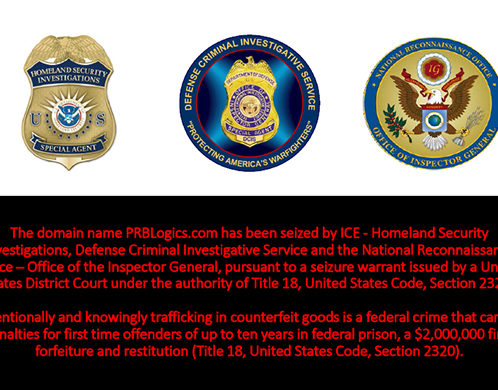In Spring 2018, hundreds of migrants from Central America approached the U.S.-Mexico border seeking asylum in the United States and threatening to enter illegally if their request was denied. Pueblo Sin Fronteras organized the caravan in conjunction with the CARA Family Detention Pro Bono Project.[24] [25] The CARA coalition consists of the Catholic Legal Immigration Network, the American Immigration Council, the Refugee and Immigrant Center for Education and Legal Services, and the American Immigration Lawyers Association, all groups advocating for legal status for illegal immigrants and expanded immigration overall.[26] These organizations have been funded by a number of major left-of-center grantmaking foundations, including the Open Society Foundations, MacArthur Foundation, Ford Foundation, and Carnegie Corporation of New York. [27] The caravan eventually halted in Mexico City on April 4 instead of reaching the United States border.[28]

In a press release released by Pueblo Sin Fronteras on March 23, 2018, the group “demand[ed]” the governments of Mexico and the United States “open the[ir] borders to us because we are as much citizens as the people of the counties where we are and/or travel.” Other demands were “that deportations, which destroy families, come to an end” and “that the U.S. government not end TPS [Temporary Protected Status] for those who need it.” [29] Temporary Protected Status is a status designated by the Secretary of Homeland Security which grants eligible foreign nationals protected status during “extraordinary and temporary conditions.”[30] The demands appear to violate U.S. law, which prohibits behavior by individuals that “encourages or induces an alien to come to, enter, or reside in the United States” illegally.[31]
Alex Mensing is an organizer and program coordinator for Pueblo Sin Fronteras and its affiliates. [34] Mensing has spent a significant amount of time with economic migrants in Central America and organizing illegal immigrant caravans to the United States.[35] According to a 2016 report by the Southern Poverty Law Center (SPLC), Mensing was a staffer for the CARA Family Detention Project, a coalition of left-of-center organizations providing legal aid and representation to illegal immigrants in the United States.[36]
Irineo Mujica, an Arizona-based activist holding dual United States and Mexican citizenship, is a caravan organizer for Pueblo Sin Fronteras.[37] In October 2018, he was arrested by Mexican officials in Ciudad Hidalgo, Mexico, for his involvement in a pro-illegal immigration protest.[38]
Rodrigo Abeja is an activist and organizer for Pueblo Sin Fronteras. He has been involved in at least two caravans from Central America to the U.S. and Mexico.[39] [40] Abeja was identified in a 2013 article by the news group Vice as a representative for the Popular Assembly of Migrant Families, an left-wing organization based in Mexico which organizes migrants to the United States.[41]
Citations found here.
Know the other operatives….
In 2015 the Catholic Legal Immigration Network, the American Immigration Council, the Refugee and Immigrant Center for Education and Legal Services, and the American Immigration Lawyers Association, collectively known as CARA, joined forces in response to Immigration and Customs Enforcement’s (ICE) significant expansion of its family detention capacity. The opening of the “South Texas Family Residential Center” in Dilley, Texas – with an initial capacity of 480 beds and the potential to hold 2,400 individuals – and the detention of families at the “Karnes Residential Center” in Karnes City – with a current capacity of 532 beds and plans to double the number – reflect the Obama Administration’s continuing commitment to the flawed deterrence policy it began in June 2014 with the opening of a temporary family detention center in Artesia, New Mexico.
In early 2016, the pro bono work at the South Texas Family Residential Center became known as the Dilley Pro Bono Project (DPBP). DPBP is a collaboration of the American Immigration Council and other partners. It operates a non-traditional pro bono model of legal services that directly represents detained mothers and children who are fleeing extreme violence in Central America and elsewhere and are seeking asylum in the United States. DPBP is an Immigration Justice Campaign local partner.
The detention of children and their mothers is not only inhumane, but incompatible with a fair legal process. The project builds on the volunteer’s collective experiences providing legal services, running a pro bono project for detained families, training lawyers and BIA accredited representatives, and leading advocacy and litigation efforts to challenge unlawful asylum, detention, and deportation policies.
The volunteers behind CARA are committed to ensuring that detained children and their mothers receive competent, pro bono representation, and developing aggressive, effective advocacy and litigation strategies to end the practice of family detention.
Background
In December 2014, Immigration and Customs Enforcement (ICE) significantly expanded its detention capacity for families (i.e., women with minor children) with the opening of the “South Texas Family Residential Center” in Dilley, Texas. Dilley is a small town located approximately one hour and fifteen minutes southwest of San Antonio. That privately owned detention facility will be the largest family detention center in the United States, with a current capacity of 480 beds and the potential to hold 2,400 individuals.
A few months earlier, ICE converted a detention center in Karnes City—one hour southeast of San Antonio—from an all-male facility into a detention center for children and mothers. Its current capacity is 532 beds, but the private company that owns the facility has already broken ground on a project to double that number.
When the government opened a similar facility in 2014 in Artesia, New Mexico, over 250 individuals, lawyers and non-lawyers alike, traveled there to fight for the rights of these families during the five–month period it was open (July through December 2014). In this new model, volunteers worked in weekly shifts to represent detainees, handing off the client matter to a new attorney each week. Much to everyone’s surprise, however, not only did the model work and grow, but pro bono attorneys continued to be drawn to it. This concept of what some called “lawyer camp” captured the hearts and minds of willing volunteers. Rather than just taking over a paper file handed to them, they were taking over the legal care of a human being desperately needing their help.
The volunteers at CARA are building on the success and volunteer enthusiasm of the Artesia Project. The dedication and sacrifice of the pro bono attorneys demonstrates how open individual attorneys are to this type of service. Primarily, these volunteers hailed from small and solo firms where every billable hour is precious. They left their practices for up to 14 days to head to Artesia to fight for their clients against the unjust machine of family detention. They left their families and purchased plane tickets, paid for rental cars, hotels and meals all on their own, a cost that ran over $1,500 per week, for the opportunity to be part of this amazing pro bono effort representing women and children in the New Mexico desert.
Currently the American Immigration Council, CLINIC, AILA and Texas Rio Grande Legal Aid are coordinating pro bono representation for women and children detained at Dilley. In 2017 alone, the Dilley Pro Bono Project represented more than 12,000 detained families, with a 98 percent success rate.
Since the opening of Karnes in August 2014, RAICES and a team of local and national pro bono attorneys, advocates, and faith-based community members have been representing the women and children at Karnes. In addition to providing significant legal representation and pro se assistance, the Karnes Pro Bono Project created a bond fund that has raised nearly $200,000 in donations to enable women and children to bond out of detention, has met released women and children at the local bus station to assist with transportation to final destinations throughout the United States, and has provided basic supplies (clothing, food, and hygiene products) to families for their journeys outside of Texas.
CLINIC is the supporting organization for the nation’s largest network of nonprofit immigration service providers. Among its activities, CLINIC’s attorneys conduct training and provide technical support on all of the immigration-related legal problems faced by low-income immigrants. The Training and Legal Support Section is staffed with eight attorneys who specialize in a range of subject areas, including asylum, the credible fear standard, Special Immigrant Juvenile Status (SIJS), release from detention, and other relief for those in removal proceedings. CLINIC has authored the seminal book in this area, Representing Clients in Immigration Court, published and sold by AILA. CLINIC staff played an important supportive role in responding to the need for representation of families detained in the Artesia facility. CLINIC staff collectively spent over two months at the facility last summer, immediately after it opened, interviewing clients, coordinating the work of volunteer attorneys, and reporting on conditions.
CLINIC has developed several immigration courses and integrated them into an online format. Last year, in response to the sudden need for representation for minors apprehended at the Mexican border, CLINIC developed and conducted a four-week course, “Representing Unaccompanied Children: What to Do and How to Do It,” and offered it free to over 400 attorneys and BIA-accredited staff. The course is now housed on CLINIC’s website and is available using recorded webinars as an “independent study” for those wanting to learn more about this subject area and improve their skills.
The American Immigration Lawyers Association (AILA) is the national association of more than 14,000 attorneys and law professors who practice and teach immigration law. AILA member attorneys represent U.S. families seeking permanent residence for close family members, as well as U.S. businesses seeking talent from the global marketplace. AILA members also represent foreign students, entertainers, athletes, and asylum seekers, often on a pro bono basis. Founded in 1946, AILA is a nonpartisan, not-for-profit organization that provides continuing legal education, information, professional services, and expertise through its 39 chapters and over 50 national committees.
Ending family detention is a national priority of AILA. The CARA pro bono project is part of AILA’s work to end the inhumane treatment of children, women and men seeking asylum in the United States.
RAICES (Refugee and Immigrant Center for Education and Legal Services) was founded and incorporated in 1986 under the name of the Refugee Aid Project. During this time, Central Americans flooded into Texas after fleeing the civil wars and social upheavals of El Salvador, Honduras, Guatemala and Nicaragua.
Several churches and religious orders answered the needs of the new arrivals by providing food, clothing, language classes, housing, medical and legal referrals. The agency provided a forum for San Antonians to meet the new arrivals and learn first hand about the situation in Central America. In 2008, RAICES enlarged its office in order to keep pace with its growing staff and programs. Located five minutes from the San Antonio Immigration Court and in the heart of the city’s historic Five Points neighborhood, RAICES continues to provide counsel and representation in a full range of defenses against deportation before the Immigration Court, as well as representation before United States Citizenship and Immigration Services in family-based immigration cases, visas and other affirmative applications.
In its third decade, RAICES has a dedicated team of attorneys, accredited representatives, and legal assistants, in addition to volunteers, student interns and partnering pro bono attorneys.
Since the opening of Karnes in August 2014, RAICES and a team of local and national pro bono attorneys, advocates, and faith-based community members have been representing the women and children at Karnes. In addition to providing significant legal representation and pro se assistance, the Karnes Pro Bono Project created a bond fund that has raised nearly $200,000 in donations to enable women and children to bond out of detention, has met released women and children at the local bus station to assist with transportation to final destinations throughout the United States, and has provided basic supplies (clothing, food, and hygiene products) to families for their journeys outside of Texas.
The American Immigration Council is a non-profit, non-partisan, organization based in Washington D.C. Our legal, education, policy and exchange programs work to strengthen America by honoring our immigrant history and shaping how Americans think and act towards immigration now and in the future.
The American Immigration Council exists to promote the prosperity and cultural richness of our diverse nation by educating citizens about the enduring contributions of America’s immigrants; standing up for sensible and humane immigration policies that reflect American values; insisting that our immigration laws be enacted and implemented in a way that honors fundamental constitutional and human rights; working tirelessly to achieve justice and fairness for immigrants under the law.
The Council’s motto is: Honoring our immigrant past; shaping our immigrant future.
The Innovation Law Lab is a Portland, Oregon-based non-profit that provides the technology and data management systems at CARA and offers a limited number of supplemental stipends for individuals traveling to Dilley through its Applied Scholars program. The Law Lab creates innovative strategies that advance the rights, protections, and modes of integration of immigrant communities in the United States by creating capacity within immigrant legal service providers, developing scholarship and research into emerging legal theories, and providing education about the law’s impact on immigrants in the United States.








